Home Brewing Professionally: Big Ambitions for Pipe Dream Brewery
I’ve never interviewed home brewers before. And who could blame me? This blog is called California BrewMasters after all… which isn’t to disrespect the age old tradition of brewing in a private residence. Maybe I just hadn’t met the right home brewers yet? I personally do not home brew; reason being I find it much, MUCH easier to cozy up to a bar and sip on the labors of others than stumble through all that hard work myself. Take my $7 and hand me a pint, damn it. Call me lazy (I certainly do), but there’s just no way in hell I’m capable of a Ballast Point Victory at Sea Imperial Stout or a Russian River Blind Pig IPA. I certainly can’t get the hop contracts.
Brian Holter, Kingsley Toby, and more recent team addition Kevin Segna are thankfully not at all like me, at least in that respect. Collectively, they make up Pipe Dream Brewery, and Brian and Kingsley have been brewing together for almost a decade. They’ve taken it to the next level with professional-quality beers and aspirations to get out of the garage (impressive in its own right) and into their own brewery. These guys are even on Untappd for Pete sake!
I first tried their beers in a hotel room late at night (the inspiration for too many blog posts these days) with Brian, Kingsley, and a bunch of beer bloggers. Mid-bottle share they whipped out some stunningly beautiful 350ml bottles and poured abso-friggen-lutely stunning fruit sours. My taste buds were wowed, and after careful inspection of the minimalist white label with a hardened smear of oil paint, the color signifying the variety (I believe I tried a deep red for raspberry and a purple boysenberry), I remarked, “Wow, you must really like these Pipe Dream guys.” Looking at each other, then back at me, they chuckled and revealed their true identities. I’m all the better for it.
Before we start this interview; a few notes. While every beer didn’t blow out of the water (how often does that happen, really?) they were all very solid, with no off flavors or flaws to speak of. They were flavorful, thought-provoking beers that have, rightly so, won plenty of awards; worthy of every and any beer-snob’s taste buds (did I mention the sours are amazing?) I was blown away, however, by the level of commitment and passion in these three gentlemen, best personified in Kingsley’s mad-scientist-like garage filled with some serious brewing equipment, and eight taps to boot. The place screams craft beer, with a homemade 10×10 cold box, water chemistry set, and multiple barrels aging who knows what. Their hard work epitomizes what I consider the very roots of the craft beer movement – it’s not about the money (they obviously can’t make a dime… yet), but it’s sure as hell about the craft.
What’s crazy is that they’re not the only folks home brewing at this level. They are three of over a million home brewers throughout the United States. So if you’re a member of one of LA’s illustrious home brew clubs, like the storied Maltose Falcons or Pacific Gravity (to which these gentlemen are members), please take this post as a hat’s off to all of you. These guys stand for everything home brew clubs are doing right, embodying the shared ambitions and enthusiasm found within the greater community.
If you can, get your hands on a bottle of Monkish Brewing’s latest release (this week!), Truimphus, a Pro-Am Belgian Tripel from Pipe Dream brewed on Monkish’s system. Pipe Dream hopes that their latest business model will set them on a course to open up professionally in 2016. For those who haven’t had the pleasure of stopping by the garage on a brew day, sitting yourself down at Kingsley’s table, and having a free beer, I hope they do.
Nick: Tell me about your brewing histories; let’s start with you Kingsley.
Kingsley: My first apartment was next to Giamela’s Deli and they had a lot of import beers there; the Heinekens and the Becks, and I thought it was the mother load. It was exotic that I had all these imports next to me. My awakening was Sierra Nevada Pale Ale, and how different beer can be. Becks and Heineken were all kind of the same. That opened my eyes to the hoppy world of beers and it grew from there.
My first home brew experience was with Brian, and his friend Al. We all work together. They got a home brew kit, brewed a beer and brought it to work. I tried it and wanted to jump on board with it. We were brewing on Brian’s balcony, we did stove top first, did a partial mash; it was mostly extract but we moved to all grain and once we had space in this location we were really able to expand and start buying more professional home brewing operation. Space is key.
Brian: Our first batch, the one I brought into work, was in December 2005. It’s been ten years this winter. I actually still have a bottle of our first brew. It was a total shit show – it was supposed to be a pale ale but ended up resembling more of a stout because we didn’t put enough water in with the grain and just burned the shit out of the grain with the stove. It was a super dark beer. The second was another pale ale that worked out much better. We’ve been learning ever since.
Kevin: My dad always drank Sierra Nevada Pale; I grew up by Tahoe and just thought it was regular beer. I never was interested in beer really, I drank Bud Light, but I went to a wedding in 2005 and stopped at a microbrew where I was introduced to IPAs. It’s just been a horrible snowball that’s taken over my life now. I was living in Chicago and my wife bought me a gift certificate to a place where they taught you how to brew. I started doing batches at home and signed up for Siebel brewing courses in Chicago. After finishing there I moved back to LA where I met these guys. I’ve been brewing with them for a little over a year now.
Nick: Did you go to Siebel with the intention of working at a brewery in LA?
Kevin: I just want to start a brewery. That’s all I want to do. I don’t want to work for anybody.
Nick: What’s the benefit of just going it on your own instead of working somewhere else?
Kevin: You can make $20,000 a year working for yourself, or $20,000 a year working for someone else.
Brian: That’s essentially it. All of us have established careers now, and brewers don’t make a lot of money. Everybody jokes that it’s a janitor’s job, and that’s mostly a comment about the type of work involved, but the pay is not amazing as a brewer either.
I think all three of us are interested in owning and operating a small business. Kingsley and I worked together at a small business for 5-6 years and I really enjoyed that process. You get a lot of experience working for a small company, learning what you would do or not because you have a lot more impact on that company than one with 10,000 employees. To me, the idea of running a company for yourself and working for yourself is enticing. Brewing happens to be what we have the most talent at, and what we’re most interested in being apart of.
Nick: Do you guys have different established rolls in the Pipe Dream set up? What’s the team dynamic?
Brian: When we first started brewing it was very much the typical home brewing story of “let’s get a bunch of crazy ingredients in and see if we can make a pineapple wheat.” Then it explodes in your face because it tastes terrible. Overtime we refocused on just brewing styles well. Kingsley has brought the other part of it, wanting to try different spices or fruits, trying to take it more outside of the style guidelines. If you defined us as a brewing pair then I’m definitely the technical side and Kingsley would be the more creative side.
As far as recipe formulation, all three of us describe what we intend to make with a particular beer, and that’s generally where it comes from. Or, you’re sitting at a bar having an amazing beer and you want to make something like that. It’s not necessarily a clone of the beer you’re drinking but you can see what the brewer did and work from that. So then you say, “OK, this what they did, what can we do different or make it unique?” Then I’ll sit down  and go through all sorts of research to figure out what we’ve done in the past, and put together a finished recipe that we then go through together.
and go through all sorts of research to figure out what we’ve done in the past, and put together a finished recipe that we then go through together.
We keep track of everything; we can go back and look at different iterations of recipes. The blonde ale that we poured earlier is batch 1, that’s the base towards a blonde ale that we want to have. Right now there’s nothing unique that stands out about it, but it’s a good starting canvas to ask what’s missing. I might like the flavors and the balance, but it’s not something I’d remember after having it. So, what can we add to it to make it memorable?
Nick: What does the name Pipe Dream mean?
Brian: The name Pipe Dream was originally just a play on words. We were always by the beach because we brewed in Marina del Rey at my apartment and we could see the water. “Pipe” plays to the waves of the ocean and it just became this idea of “what if we could really do this?” Back then we had no aspiration of doing it even though you’d talk about it over beers. Pipe Dreams stuck with us, and once we got more serious about brewing and established ourselves as the “Pipe Dream guys” we couldn’t change it. As far as commercially, we’re still debating whether or not to keep that name. We like it, but it might not be the name of the brewery.
Nick: What do you want this brewery to be conceptually?
Kingsley: We’re not afraid to brew any kind of beer. We aren’t going to stick to sours but it will definitely be in our wheelhouse. You always need a hoppy aspect but you don’t want to be known for it always. We want people to be educated by the experience, and to stick close to the home brewing community.
We want to start with a small place and see how it runs, but it’s the money as well. If the demand is there for our beers then we can talk about a separate production facility and have a tasting room as the epicenter of how we started. We want to keep it small and intimate instead of trying to flood the market.
Nick: At what point did you have that moment of “maybe we can turn this into a business?”
Kingsley: It started when we began winning awards and getting unbiased opinions. All our friends come here and get free beer, so you’re not getting a truly honest review. But, when there are judges drinking an unmarked bottle of your beer, and they consistently rate it highly, that’s when we woke up to the idea that we were making good beer.
Nick: The garage itself is incredibly impressive. Tell me about some of the highlights?
Brian: So basically, on the left we have the brew system. It’s a three-vessel system, which is what we call a HERM system, which is a Heat Exchange Recirculating Mash system; it means we circulate the mash through a coil of some sort that maintains its temperature by the liquid that surrounds it. It’s 100% electric, 240 volts, 30-amp line, so it’s super powerful and extremely scary (especially the first time we plugged it in). Rubber gloves even though it probably wouldn’t have made a difference, especially given the fact that I wired it.
The back corner is the fermentation center. It’s a two-stage temperature controlled fermenter, and to the right of that is the walk-in cooler – which is a 10×10 room that we keep all the bottles and kegs that we store. It gives us the ability to brew really high gravity beers that need time to age and keep them in a cold box. Or we can bottle a bunch of beers and store them for competition so they can age properly.
Then we have a glasses cabinet covered in as many brewery stickers as we can possibly get. And our brew bench, that has all our water chemistry chemicals, water salts, pH tests; basically all our brew day gadgets. Then we have a shelf with whiskey barrels.
Nick: And of course, 8 tap handles. So what do you think you’ve invested in this garage?
Brian: It’s one of those things we don’t like to think about. I think the brew system itself is probably $4-5,000 over the course of half a year. I think the walk in was probably close to $1,500 tops. In total there’s probably somewhere around $10,000 in here. We have 30 kegs and kegs are $80 a piece. There’s a lot of re-purposing in there.
Kingsley: Yeah, don’t put out my address in this piece! We’ve sold off old gear to make way for new gear.
Nick: As serious home brewers, this is a no gain investment. What’s the continual drive to put that much money into it?
Kingsley: The primal answer is that we get to make alcohol. But it really is a snowball. It’s a hobby that just takes over if you’re good at it. I was a cocktail guy before this, tiki drinks were my thing. Being able to take several ingredients to create a flavor, and alter that flavor based on what you want as a taste or what you want to experiment with. The other side of it was cooking; I love cooking and working with different flavor profiles. I equate a lot of how I create a recipe to cooking.
Kevin: I hate cooking, but I love creating and being creative. I think it’s great to sit there and think of new ideas. Instead of seeing art you get to drink it, and get drunk. It’s a win win.
Brian: I would echo the creative side. I get to be very technical in my job, and ultimately it’s not my product, it’s my client’s product, so you end up getting stifled. Brewing allows you to present people with something that’s totally created by me and it’s how I wanted it to be created. In my professional career I don’t get that a lot. Brewing gives me that opportunity.
Nick: Is there a social aspect of having everyone be able to come by the house and have some beers?
Brian: Brew days are packed here. Kingsley’s neighbors know that if the garage door is open it’s a brew day that they can stop by. It’s likely that somebody will stop by while we’re sitting here and have a pint before an afternoon bike ride.
Nick: What’s it take to move this dream forward?
Kingsley: How much money you got?
Brian: We’ve had false starts over the years because we’re pretty particular about actually starting this. For Kingsley and I, and now Kevin too, it’s a total restart of a career. We don’t take that likely, especially because we all like our jobs. I think a lot of people that jump ship to start a brewery are generally working a job that they hate. That’s a motivator for them. Running our own business is definitely a motivator, but getting out of where we are is not as much.
We finished our financials and we’re getting to the point where we’re going to start asking for finance and investment capital with a goal of doing something in 2016. We’ve always stuck to our timelines and it just hasn’t worked out in the past to be the right set up. We think this one is.
Kingsley: We’ll get there, but we want to make sure we do it the right way instead of running out and producing crappy beer, or failing… or both, which usually goes hand in hand. We’d rather be small and loved than large and not appreciated.
Nick: Home brewing clubs like Pacific Gravity, which you’re apart of, have a pretty storied history in LA. What affect have home brew clubs had on LA beer?
Brian: I think home brewers were the beer culture in LA up until the last 5-10 years, so there’s a foundation built here in beer but it wasn’t commercially viable or done here commercially. Look at the breweries that started up. Eagle Rock and Ladyface were both Maltose Falcons. Smog City and Phantom Carriage were both Pacific Gravity. All these breweries founded in LA are all based off home brew clubs. Home brewers were here before it was commercially in vogue, and a lot of the renaissance in beer came from home brewers, too. Home brewers have been able to push the limits of creativity a lot more than commercial breweries have; sometimes to bad extents and sometimes to really good extents. We have the flexibility of failing where commercial breweries don’t and shouldn’t.
Nick: Is there any issue right now that you want to talk about?
Kingsley: I hope LA doesn’t move to fast to catch up to San Diego. It seems like San Diego had a very gradual, very craft root mentality. I think a lot of places here call themselves craft but are opening up immediately with too much money, too much space, and not good product. Not everybody of course, there’s great beer everywhere, but I hope LA doesn’t get a bubble because of people trying to make money and not create great beer.
It should be based on what’s in the glass. If these places start big and aren’t making great beer off the bat but start making great beer, then its probably because they have a brewer or team they’ve hired that does have passion. So they’ve bought passion. And then maybe they start making great beer.
Nick: Does it really come down to what’s in the glass though? Isn’t there more to it?
Kevin: If you don’t see a label. We’ve done blind tastings, and we’ve actually done a session IPA blind tasting and I had a Founders beer that I loved, and it ended up being Stone Go To IPA that won by all of us. I would have never guessed that.
Brian: For me, I used to ignore Firestone Walker. I’m not sure why. When we started to work on our pale ale we would buy commercially similar pale ales to compare in a blind tasting and chose our favorites. Every single time Firestone Pale 31 won by far. I was just blown away at how much I liked it and the fact that I had ignored it for whatever reason. To answer your question, “does it matter,” without labels it’s the only thing that matters. But people do factor in labels and I’m certainly guilty of it myself.
 I’d say I had major concerns about LA as a beer scene when the first major brewery that started to represent LA was Golden Road, the beers they were putting out weren’t beers that anyone here that had been apart of this culture were proud of. They were THE Los Angeles brewery – and I’m not trying to pick a fight with them because they’ve done amazing things since hiring Jesse Houck and Victor Novak and all their beers are really good now – I’m happy to have them be the LA thing, but that’s what we’re talking about where someone comes out and if they have money they’re a representation of the city. Hopefully they right their ship and it’s “let bygones be bygones,” if you’re making good beer I shouldn’t care otherwise.
I’d say I had major concerns about LA as a beer scene when the first major brewery that started to represent LA was Golden Road, the beers they were putting out weren’t beers that anyone here that had been apart of this culture were proud of. They were THE Los Angeles brewery – and I’m not trying to pick a fight with them because they’ve done amazing things since hiring Jesse Houck and Victor Novak and all their beers are really good now – I’m happy to have them be the LA thing, but that’s what we’re talking about where someone comes out and if they have money they’re a representation of the city. Hopefully they right their ship and it’s “let bygones be bygones,” if you’re making good beer I shouldn’t care otherwise.
The other thing is the trends in styles of beer. We’re guilty of that too. I just hope everyone doesn’t try to produce the exact same thing as the brewery next to them. Just because everyone wants to buy an IPA I hope there’s still more creative freedom for people to do things outside of a saison, an IPA, a pale ale; and that being the core lineup.
That’s why I love what Monkish is doing, Henry Nguyen is one of the most original brewers that we have in LA. He did an event during LA Beer Week with Mark Jilg from Craftsman and Bob Kunz from Highland Park and you’re sitting there at this meeting going, “this is what it is.” Here are three guys that are perfect at showing what LA beer can be. Mark has been doing his thing forever and he is resolute in who he is. Henry is the same way. He’s pumping out everything from that small brewery and everything I’ve had from them has been great. They’ve quickly been able to create an identity for themselves, so I really appreciate that and I’m cautious of what other people are doing.
Nick: Any final thoughts?
Brian: As far as the home brew scene is concerned, just because you don’t brew doesn’t mean you cant go to a home brew club. I think people get really intimidated by them, that they’re going to go in and everyone is going to be really hoity-toity about beer. There are definitely those people there, but it’s not the majority. A lot of people are a couple and they’ve gotten into brewing together and they hang out to learn about beer. A lot of that is what the home brew clubs are. The Maltose Falcons are amazing at teaching people about the history of beer. Pacific Gravity has a ton of amazing brewers, and there’s always great beer to try at home brew clubs. People are resistant to get involved but if you’re interested in beer culture that’s where a lot of it is found.
Kingsley: You’re not going to find more passionate or educated people than home brewers. That’s their passion.












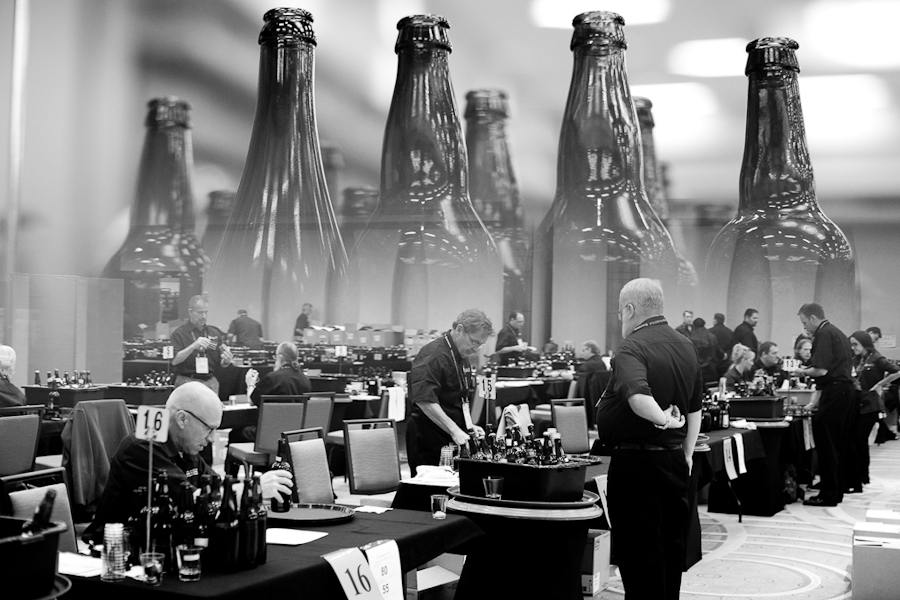
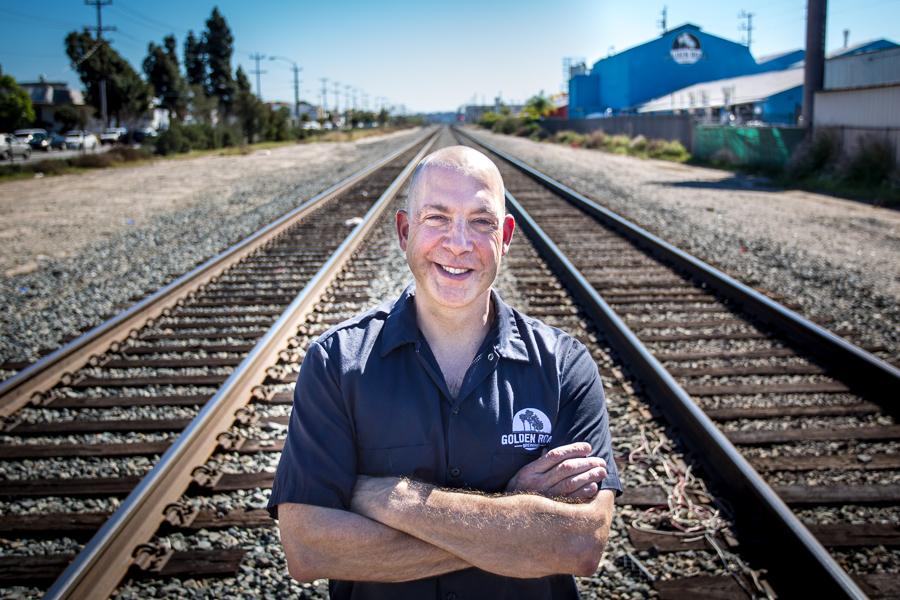

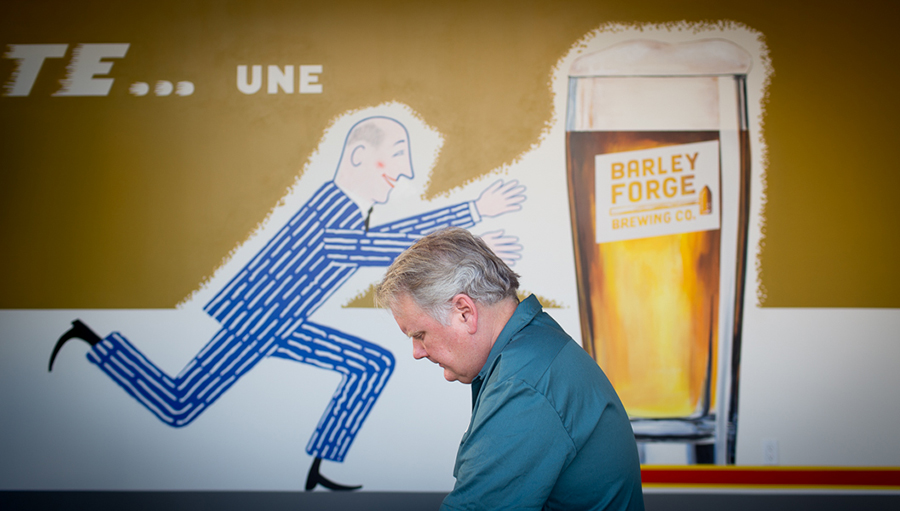

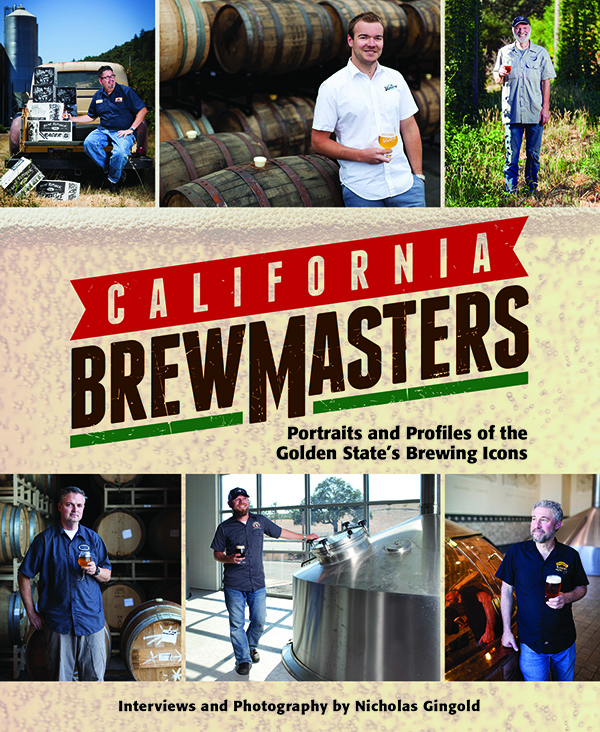

Leave a Reply
Want to join the discussion?Feel free to contribute!